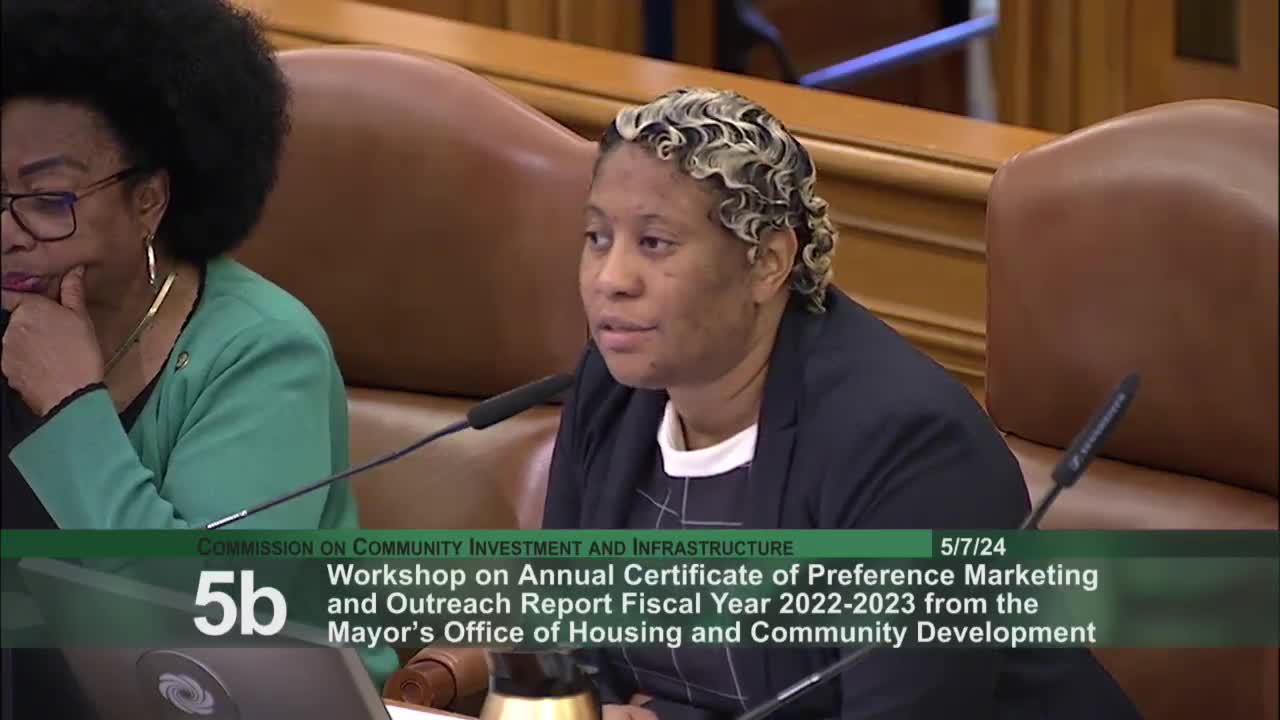Housing Needs Drive Families to Reject Inadequate Two-Bedroom Options
May 07, 2024 | San Francisco City, San Francisco County, California

This article was created by AI summarizing key points discussed. AI makes mistakes, so for full details and context, please refer to the video of the full meeting. Please report any errors so we can fix them. Report an error »

In a recent San Francisco city meeting, a poignant discussion unfolded around the pressing issue of housing inadequacies for families, particularly those with children. The atmosphere was charged with empathy as speakers highlighted the struggles faced by families who are often left with unsuitable housing options that do not meet their needs.
One speaker passionately articulated the dilemma faced by families with multiple children, emphasizing the emotional toll of being offered inadequate living spaces. "If they've got four children, three boys maybe and a girl, then themselves make five and they're only offered a two-bedroom," they explained, illustrating the discomfort and potential safety concerns of such arrangements. The speaker urged the audience to understand that families are not rejecting housing out of preference but rather out of necessity for dignity and safety.
The conversation revealed a deeper issue: the systemic barriers that prevent families from finding suitable homes. Many families are forced to decline offers because the housing does not accommodate their needs, leading to a cycle of rejection and frustration. "It's not that they don't want it," the speaker insisted, "but they see these obstacles." This sentiment resonated throughout the meeting, as participants reflected on the broader implications of these challenges, including the impact on children's well-being and education.
Moreover, the discussion touched on legal constraints that further complicate housing for families with foster children. Under state law, boys and girls cannot share a room, which adds another layer of difficulty for families navigating the housing market. This legal stipulation underscores the urgent need for more family-friendly housing solutions in San Francisco.
As the meeting progressed, attendees were reminded of the importance of understanding the human stories behind the statistics. "Don't just take the statistics in black and white," one speaker urged, highlighting the emotional weight carried by families who are often misrepresented in data. The call to action was clear: city officials and community members must work together to create housing that respects the dignity of families and meets their diverse needs.
In conclusion, the meeting served as a crucial reminder of the ongoing housing crisis in San Francisco, particularly for families. As discussions continue, the hope remains that solutions will emerge that not only address the numbers but also honor the stories and struggles of those seeking a place to call home.
One speaker passionately articulated the dilemma faced by families with multiple children, emphasizing the emotional toll of being offered inadequate living spaces. "If they've got four children, three boys maybe and a girl, then themselves make five and they're only offered a two-bedroom," they explained, illustrating the discomfort and potential safety concerns of such arrangements. The speaker urged the audience to understand that families are not rejecting housing out of preference but rather out of necessity for dignity and safety.
The conversation revealed a deeper issue: the systemic barriers that prevent families from finding suitable homes. Many families are forced to decline offers because the housing does not accommodate their needs, leading to a cycle of rejection and frustration. "It's not that they don't want it," the speaker insisted, "but they see these obstacles." This sentiment resonated throughout the meeting, as participants reflected on the broader implications of these challenges, including the impact on children's well-being and education.
Moreover, the discussion touched on legal constraints that further complicate housing for families with foster children. Under state law, boys and girls cannot share a room, which adds another layer of difficulty for families navigating the housing market. This legal stipulation underscores the urgent need for more family-friendly housing solutions in San Francisco.
As the meeting progressed, attendees were reminded of the importance of understanding the human stories behind the statistics. "Don't just take the statistics in black and white," one speaker urged, highlighting the emotional weight carried by families who are often misrepresented in data. The call to action was clear: city officials and community members must work together to create housing that respects the dignity of families and meets their diverse needs.
In conclusion, the meeting served as a crucial reminder of the ongoing housing crisis in San Francisco, particularly for families. As discussions continue, the hope remains that solutions will emerge that not only address the numbers but also honor the stories and struggles of those seeking a place to call home.
View full meeting
This article is based on a recent meeting—watch the full video and explore the complete transcript for deeper insights into the discussion.
View full meeting
